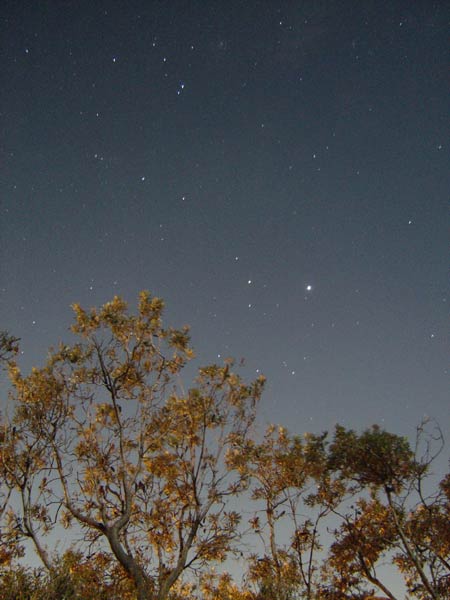
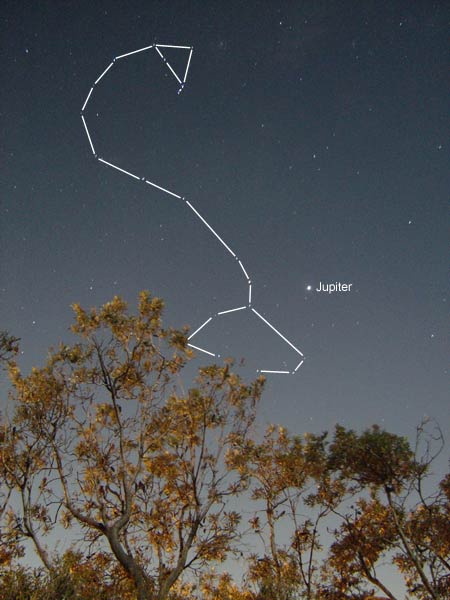
Observing the Night Sky | Home | Astronomy | Astrophotography | Science | Space Science | Astrobiology | Science Teaching | Related Links | Contact Me
My Observable Universe
One of the great things about Astronomy is that it can be both theoretical and practical. A total appreciation of the subject involves the mathematical (which I avoid lots of the time), the hypothetical and the theoretical. It also involves more personal experiences like imagination and observation. The great diversity of this field and its ever changing body of knowledge is what keeps me so interested and busy. As an escape from this busy life it is great to get away from things and observe the universe. This can be done at many levels and on any budget and I discuss a few of these below.
Using Your Naked Eyes
There is so much to see with the unaided eye. I could spend my whole life just exploring the sky with my naked eyes and there would always be something to discover. The constellations are a great example. There are 88 official constellations in the whole sky that depict things ranging from the ancient gods to modern instruments like the microscope. Using books like The Stars by H.A.Rey you can learn the shapes in the sky made by joining the stars. Many of these are difficult to see or even imagine but there are a few that are truly wonderful. A great example is the constellation of Scorpius the scorpion (below). Other great resources for looking at the sky with your eyes are a sky map from www.skymaps.com or a planisphere.


Your eyes are really limited by the diameter your pupils can dilate to when you are adapted to the dark. This is a maximum of about 7mm and this limits how much light they can gather and how small the details you can resolve will be. Despite this you can see the Andromeda galaxy 2 million light years from Earth with your naked eyes if you know where to look. Your naked eye observable universe is truly enormous, taking you 2 million light years distant and 2 million years into the past. Remember that the light from the Andromeda galaxy has been travelling for 2 million years to get here so observational astronomy is like a time machine showing you the universe at many different times in many different places.
Using Binoculars
When you have lived a lifetime of learning about the naked eye sky a small investment in a pair of binoculars will increase the size of your observable universe by many times. You will be able to look much further out into the universe. Objects that looked like stars to your naked eyes can be seen as galaxies, star clusters, nebulae and planets with moons in a pair of binoculars. An example of two things I can observe with my binoculars is shown below.
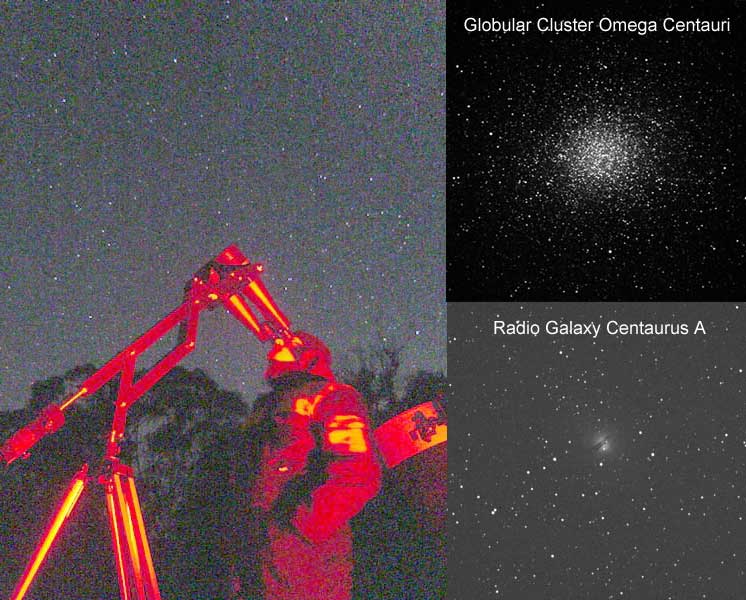
On the left you can see the setup that holds my 100mm binoculars and how I use them to observe. Omega Centauri looks like a star to the naked eye but it is actually a globular cluster of about 4 million stars about 17000 light years away. Centaurus A is a radio galaxy (commonly called the hamburger) which is invisible to the naked eye but comes into view in small binoculars. This galaxy is about 14 million light years away and contains a supermassive black hole that is spewing particles at close to the speed of light out into the universe (see images below).
One of the reasons I love to look at objects like these is to observe what I can of things that are so much more than they appear to your eyes. The galaxy Centaurus A is a great example of something that is much more than meets the eye.
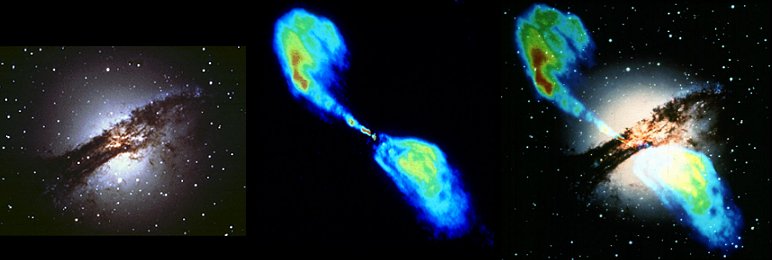
Centaurus A is a classic example of a Radio Galaxy. In a visible light image (above left) it looks like a galaxy with a large dusty disk or dust lane through it (or a hamburger with two buns and lettuce for the imaginative). With a radio telescope you get a different view all together (above middle image). Two huge lobes of radio emission announce the presence of a supermassive black hole in the centre of the galaxy that is "feeding" and spilling particles out the corners of its mouth at near the speed of light (black holes can be messy eaters). These high speed particles emit radio waves and as you can see in the right hand image (an overlay) they are shot well outside the visible galaxy. Visible light image from NOAO / CTIO. Radio image from NRAO / VLA observed by Jack O. Burns (University of Missouri) & David Clarke (St. Mary's University, Nova Scotia). You can read more about this galaxy at the HST website.
Binoculars allow you to see a much greater range of objects and appreciate how they are spread across the sky. The real advantage of most binoculars over a telescope is their wide field of view and the fact that you can look at something with both eyes (unlike telescopes). You get better contrast with two eyes and it is easier to filter out any imperfections in your vision like the slight astigmatism I have.
Using Telescopes
If you want to fill 100 lifetimes with observing the universe you can buy a telescope. The best value for money is a Dobsonian reflector (my 16" Meade Lightbridge is shown below). This is a Newtonian telescope that uses mirrors to gather and focus light. It is mounted on a simple wooden base that allows you to move the telescope up and down and side to side.
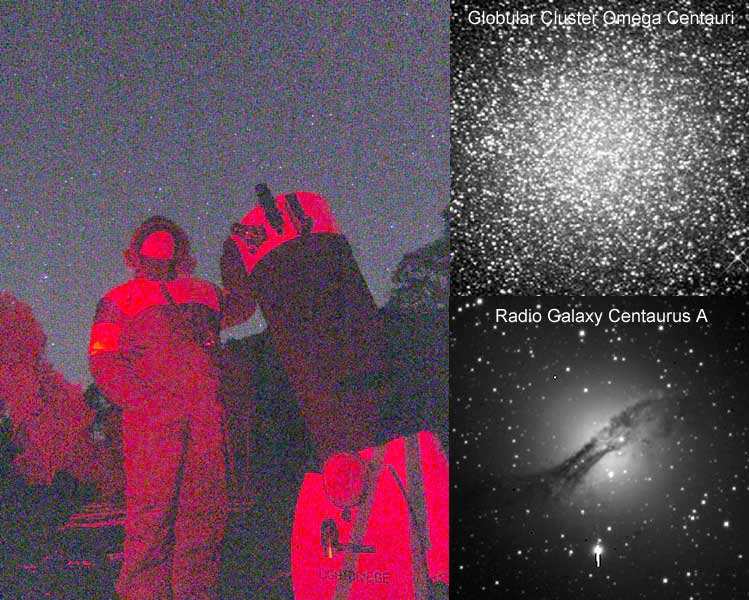
The real advantage of a telescope over binoculars or your eyes is they can gather more light. The bigger the area of the mirror in your telescope the more light it can collect and therefore you can see fainter objects. A comparison can be made by looking at the two images above. I have placed images next to my binoculars and my telescope that show you roughly what the same objects can look like through each instrument. You can see that when you look through a telescope you can "zoom in" (reach higher magnifications) using different eyepieces, the objects look brighter (higher sensitivity due to gathering more light) and you can see more detail (higher resolution due also to gathering light over a larger area).
Hours of freezing cold enjoyment await you if you buy a telescope. As you can see in the images of me above I cheat the cold with an industrial freezer suit. It makes it so much more enjoyable. You don't have to buy a telescope though, find a friend who has one or join a club and share their enjoyment.
Using a Camera
To learn more about what you can see when you use a camera to observe the universe check out my other pages that introduce you to simple astrophotography and simple digital astrophotography. Of course you can also combine the use of a camera and a telescope to add yet another dimension to your observable universe.
As you can see the possibilities are endless. If you're interested in any of these I encourage you to get out there and enjoy yourself. The universe is there for everyone to enjoy and it belongs to us all.
Observing the Night Sky | Home | Astronomy | Astrophotography | Science | Space Science | Astrobiology | Science Teaching | Related Links | Contact Me